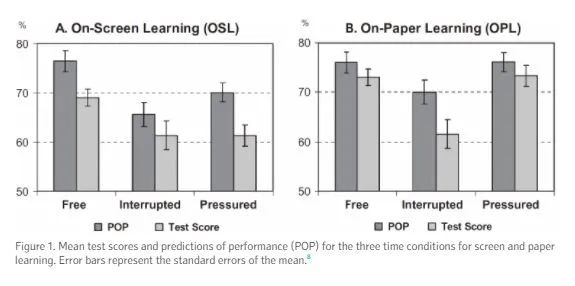
Paper or Plastic? Reading Comprehension
February 24, 2021 – Michael Marsh
Some years ago, we had a choice in the grocery check out process...paper or plastic. Some 'greener' companies still offer options, but most major chains are plastic only. Or you can bring your own reusable bag.
Similarly, some years ago, there was little choice in the claims handling process. We had paper files. Thick, heavy, burdensome paper files. Paper cuts. Bent corners. Torn hole punch holes. And those major case files, ten, twenty, thirty volumes of medical and legal records.
Then came the computers. The industry has hailed the computer as time saving, more efficient and cost reducing. Slowly, many in the workers' compensation claims industry have been moving to 100% electronic digital records.
And then came the pandemic of 2020. Most of those that were hesitant to embrace the 'work from home' environment were in most jurisdictions mandated to a position that 'work from home' was the only solution. Many now, from large TPAs to industry commentators, are claiming that the days of the large, in person offices responsible for claims handling are over. This may result in a significant real estate cost savings for those in the claims industry and a more 'desirable' work environment for claims professionals. Really, who can complain about not having an hour one way commute each day?
Are the consumers of workers' compensation claims services being well served by this move? Again, there are significant conveniences. Client representatives have access to the RMIS and the claim professional notes and Action Plan. In most states, large deductible and self-insured clients have direct access to reserve and payment information with live access to the TPA / insurer portal. They need to see the most recent Medical Status report...they sign in and look at the documents. No telephone tag. No e-mail waiting game.
The workers' compensation claims industry, to a degree the entire industry including underwriting and loss control, tend to silo costs and expenses. We've all heard and read the questions, like "how can we save on the TPA fees?" and "if we switch to a new bill review platform can we reduce the processing costs?" Further, when a book of claims business is being shopped for a claim services provider, it is common to see the effort led by the Purchasing Department. Their role is to ensure that a basic list of minimums (too often mislabeled as 'best practices') while getting the cheapest price possible. Professional claims service contract placement by the folks responsible for purchasing paper and computer monitors.
What is the impact when costs are approached in a silo manner? The total cost of the program is removed as a selection criteria. In too many situations I have seen, no one is asking the question "how will changing xyz to abc impact upon the total cost of our program?".
Which brings me to the move from paper files to plastic (screens).
Are the overall claims results generated by the claims professionals equal to or better by looking ONLY at digitized images? From my review of claims over the past few years and based upon some of the studies performed, it appears that it may be more costly from an overall cost of program standpoint to go to a 100% digital image environment.
Studies
There are of course no studies that I have found directly looking at the workers' compensation claims industry. There are, however, a good number of educational studies that have considered comprehension on the paper vs plastic question.
Scientific American – 2013
https://www.scientificamerican.com/article/reading-paper-screens/
”Whether they realize it or not, many people approach computers and tablets with a state of mind less conducive to learning than the one they bring to paper.”
“When managing their own study time, however, volunteers using paper scored about 10 percentage points higher. Presumably, students using paper approached the exam with a more studious frame of mind than their screen-reading peers, and more effectively directed their attention and working memory.”
“When it comes to intensively reading long pieces of plain text, paper and ink may still have the advantage. “
The Hechinger Report – 2019
https://hechingerreport.org/evidence-increases-for-reading-on-paper-instead-of-screens/
“The benefit for reading on paper was rather small, after averaging the studies together, Clinton said. But 29 of the 33 laboratory studies found that readers learned more from text on paper.”
Researchgate.net - Caroline Myrberg and Ninna Wiberg - 2015
Frontiers in Psychology – 2019
https://www.frontiersin.org/articles/10.3389/fpsyg.2019.00038/full
“However, a recent meta-analysis (Delgado et al., 2018) of 54 experiments published between 2000 and 2017 comparing the reading of comparable texts on paper and screens does find an advantage for paper both for between-participants and for within-participants studies. The meta-analysis revealed three significant moderators for this main finding: (i) time frame (i.e., the advantage for paper-based reading was stronger in time-constrained reading than in self-paced reading); (ii) text genre: the paper-based reading advantage was consistent across studies using informational text or a mix of informational and narrative texts, but there was no difference for narrative-only texts; and (iii) publication year: contrary to assumptions of “digital natives” becoming better screen readers with increasing screen exposure and experience, the meta-analysis found that the advantage of paper-based reading in fact increased from 2000 to 2017 (Delgado et al., 2018).”
“Although it should be considered largely exploratory, the study adds to a growing body of evidence indicating that paper and screen reading may differ also in cases of linear, narrative reading where there are no hyperlinks to click on or multimedia content to process."

As represented in the graphs above, the commonality of the studies seems to be that documents that are long, technical and complex are better understood and comprehended when physical paper is used as opposed to only on computer. I've seen the number 10% used a number of time on technical documents where comprehension from reading such complicated documents is 10% better when done with paper.
I've not been involved is these studies, but I have over the past 20 years seen a significant move away from paper. And my company has won contracts taking over workers' compensation claims from other TPAs that (before our involvement) were 100% digital. I have had the opportunity to see both sides and see the total program costs that result.
Consider this. Many long term claims are ten and twenty volumes of paper. There are literally thousands of pages of medical reports, surgical reports, IME reports and investigation reports. For some surgeries, it is not uncommon to see a thirty or forty page operative report when combining the specialties.
We as an industry now are telling the customers that our claims professionals will read, understand and take action(s) equal to or better reading these thousands of pages on screen while working from home than if there was a paper file available for review. But is it actually happening?
If one puts credibility to the studies and there is a 10% REDUCTION in comprehension by the reader of long and complex documents on screen compared to the same documents on paper, is there not a direct impact to the effectiveness of the claims professional? A case can be made that moving from paper to 100% digital may lead to inefficiencies (late causation identification, letters to providers, late discovery of body part creep, etc). Extending the time a claim is open routinely increases the Indemnity costs in the form of lengthened TTD. A case can also be made that the claims professional is missing 10% of the content when in the digital environment. If that leads to a mistake or late identification of an issue one in ten times, there has got to be an impact upon the loss cost.
Takeaway: For the buyer of workers' compensation claims services, is there truly a savings when they are told that 'work from home' and 'fully digital records' are more efficient...or is it possible that the digitization of records is actually costing MORE? It is a question that every claims consumer organization should be asking and studying. If the digital process is missing or slow in one of ten issues, is there actually a 10% INCREASE in the total cost of the program?
A critical examination of the results achieved by claims professionals needs to be done to ensure that the services provided meet customer expectations and needs. While the reality of the work from home movement is likely to remain, the industry needs to demonstrate to its customers that not only are processing costs lower, but that the efficiencies gained are being reinvested in increasing humane services provided to recovering workers and what the impact is upon the total cost of programs.
Full Disclosure. My company uses digital records where efficient and effective. We are now and will continue for the foreseeable future a paper claim file company. I want my claims professionals to read and comprehend every document, not only 90%. The recovering workers and their employers deserve the best that we can give them. Shooting for 90% as the goal is not our way.
